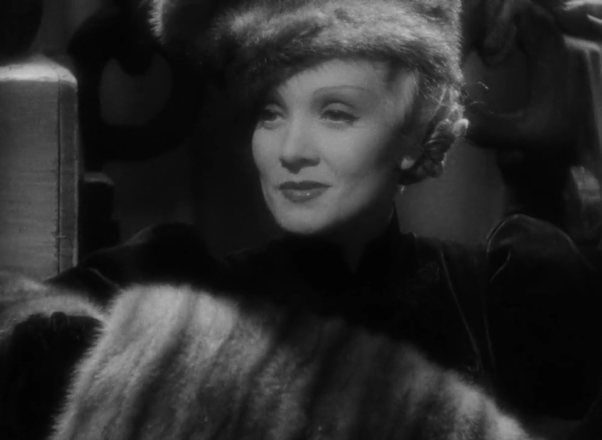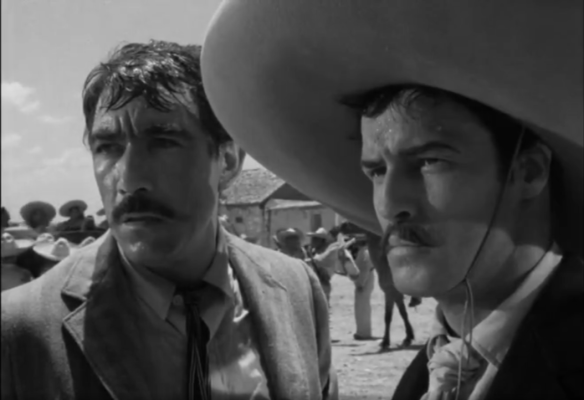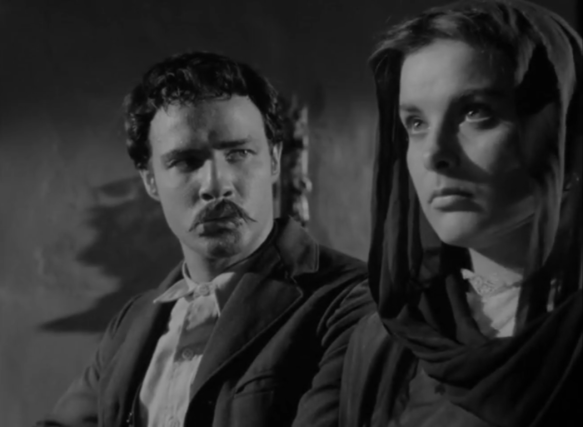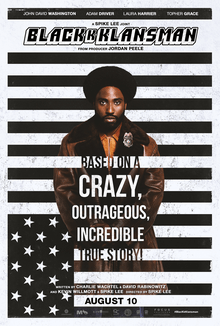 We just lost Robbie Robertson and being an avid fan of The Band, I was genuinely affected by the loss. The relationship between Martin Scorsese and Robertson is hardly a secret from The Last Waltz to their many film score collaborations, but Robertson also has Native American heritage through his mother.
We just lost Robbie Robertson and being an avid fan of The Band, I was genuinely affected by the loss. The relationship between Martin Scorsese and Robertson is hardly a secret from The Last Waltz to their many film score collaborations, but Robertson also has Native American heritage through his mother.
He’s not Osage — his mother was Cayuga and Mohawk — and yet there is a sense he’s as close to this material as anything his friend has ever made. The film is instigated by oil gushing out of the Osage land instantly making them the wealthiest people per capita in 1920s America. Robertson’s composition punctuates the moment taking center stage with a driving blues riff. It announces the introduction of the movie onto the scene and Robertson’s influence is felt over the entire picture.
The Osage murders have never been a focal point of history, but thanks to David Grann’s book and Martin Scorsese’s subsequent film hopefully more people become aware of this searing chapter of American history.
I heard Scorsese talking about coming at the story from the inside out, and I think what he means by this is finding the core of the story. He was not interested in an FBI procedural from the point of view of the good guys, although Jesse Plemons shows up about 2 hours in to help rectify the miscarriage of justice.
There’s something more fundamental here. You see it in many of Scorsese’s movies from Goodfellas, Wolf of Wall Street, or any of his gangster pictures showing the traditional villains in an intimate if not entirely sympathetic light. He always seems to return to this because this was his childhood — he grew up in a neighborhood with these sorts. By the world’s standard are they corrupt? Yes, but they aren’t personified evil. They act as complicated characters full of charisma, humor, and whatever else.
It feels like this is his gift as a filmmaker. Because we don’t always like these people, but he was never interested in a black hat and white hat morality. Perhaps that’s why he did not make Killers a more traditional Western because this would not be true to the ethos he’s had since the very beginning.
We meet Ernest Burkhart (Leonardo DiCaprio) as he comes to live with his uncle (Robert De Niro) who encourages him to get close and marry into an indigenous family so he might gain access to their oil head rights. Soon after Burkhart develops genuine feelings for the local Osage Mollie (Lily Gladstone). It’s this weird dance — this strange tension — between a traditional love story and people who seem to be taking advantage of a situation, whether it be a paternal influence or just a twisted, morally bankrupt constitution.
Also, I was considering how the movie does become a kind of woman-in-peril movie like we used to see in Old Hollywood albeit with a slight wrinkle. Because of course, the dramatic question revolves around how all of Mollie’s family members become sick or die under dubious circumstances.
There is nothing to stop the onslaught, and there’s an inclination that Ernest is bringing her downfall even as he seems to want to insulate his wife from harm. He also has no qualms about admitting his weakness for money or further capitulating to his uncle’s bidding whenever he’s called upon. If that sounds needlessly ominous, that’s because it is.
Watching DiCaprio is an experience. I was trying to figure out if he was chewing up the scenery, and yet he makes up for any moment that feels like acting through his utter lack of vanity. He could have played the white knight Texas Ranger, and yet here he is as this money-grubbing ignoramus who fumbles his way through criminal activities while still resolutely loving his wife in his sad and dismal way.
Certainly, it’s richer with subtext, but it requires someone prepared to eschew glamour and Hollywood masculinity. Ironically DiCaprio represents all these things and still manages to upend them so we forget them even momentarily. His hair frames his head like Alfalfa and his lips are almost permanently in a downward pout. We don’t know what WWI did to him only that he has a busted gut, and he’s looking to his uncle for work.
De Niro is such an unsettling figure with his insidious brand of charity-turned-malevolence. King is one of those individuals who claims to love these people and is set up in their community doing nice things for them while simultaneously taking advantage of them at every turn.
He’s not purposefully evil; instead, he feels a God-given justification to acquire their wealth because he is spiritually and racially superior — at least this is what he’s deluded to believe. It’s not spoken so much as felt with every undertone of his being.
It strikes me that Scorsese had Joe Pesci in The Irishman go softer and quieter and he thus became menacing in an altogether new light after years of being mercurial and bellicose. Here De Niro does much the same, toning down his usual fire or even the anger of his and Marty’s youth into something more subtle and still equally effective. It’s a role for an actor who is fully confident in his instrument and his abilities.
It’s this kind of villainy that’s so unsettling because it feels so real and present. It lives in the ambiguity, and it does feel like Scorsese has made a wise film for the 21st century. However, don’t think for a minute that I’m saying that this evil is ambiguous. Much of what we witness is abhorrent, and yet how these people in the same breath can commit murders and somehow live in community becomes the queasy soil we must contend with. There are the active transgressions that feel the most egregious, but there’s something equally pernicious about complicity, sins of omission, if you will.
Lily Gladstone is such a powerful emotive force in this movie because if Leo’s performance is one way, she is his perfect scene partner by maintaining such a calm equilibrium; there’s a regality to her that’s not easy to break and yet she’s not an unknowable stoic. She loves deeply and with Ernest and her family, we see both her affection and her deep sorrow when they are ripped away from her one by one. The movie requires her strength to hold it together and instill it with resonance.
On a side note, there’s a scene early on where Mollie shares a moment talking with her sisters — they’re laughing and observing her man Ernest from a distance. She affectionately nicknames him a “coyote,” but through the whole scene, they laugh and chitchat in their native tongue. There’s something so meaningful about it.
Oddly enough, it reminded me of how John Ford hired the Navajo as extras in The Searchers — a film with an incisive and controversial reputation. I have no way of corroborating this, but apparently, they cursed and made jokes in their native language on camera. Of course, the primary audience in 1950s America wouldn’t know this. Killers of the Flower Moon is a very different sort of movie, and here the Native actors are brought closer to the center (if not entirely) so we all can be in on the joke.
There is an uneasy joke of a different kind when the film’s epilogue is summed up by an old-timey stage production out of the age of serialized radio shows. Normally we see these moments played out in stunted lines of courier text over black, and yet Scorsese and screenwriter Eric Roth make them visual and somehow native to the film’s world.
Until this moment we’re still invested in the story, and it’s difficult to recognize what Scorsese is doing, but he uses the meta moment to comment implicitly on framing such tragedy as entertainment. Isn’t that what he’s doing after all in so many words? If you wanted to be pragmatic, you could make the case he’s created a $200 million project to sell tickets.
However, it becomes more than a technique or an intellectual treatise when he steps out on the stage in the flesh. It’s not merely a cameo, but a cornerstone of the picture as Scorsese himself utters its final lines. There he stands in all sincerity letting the studio audience and all of us know that Molly died in 1937 and no mention of the murders was ever made. They were effectively erased from historical memory by the dominating culture. We’re so good at doing this.
The final shot feels like a Busby Berkeley aerial, but it focuses on the Native Americans pounding their drums in an emphatic ceremony. It’s a drum for Robbie Robertson. A drum for Mollie. And a drum for all the Osages who lost their lives in utter anonymity without justice. I will miss Robbie Robertson dearly, but it’s a fitting film for him to take a bow on. He receives a remembrance in the credits.
If Killers of The Flower Moon is not Scorsese best then it is still a film rich with emotion and deeply important stakes. I’m not sure I’ve ever seen a story put to screen like this on this kind of scale. In his hands, you can sense the care and this means a lot. Somehow he always finds this imperceptible line between the profane, violence, and some core truth. The first two repulse me, and yet in his films, their depiction often leads to an inherent awareness of our broken natures as human beings.
He never asks easy questions and I believe that comes with honesty, and it’s part of the reason he’s still one of our premier filmmakers. He’s still curious and the questions he asks with his films are ones he’s still wrestling with now 80 years on. They’re universal.
4/5 Stars.













